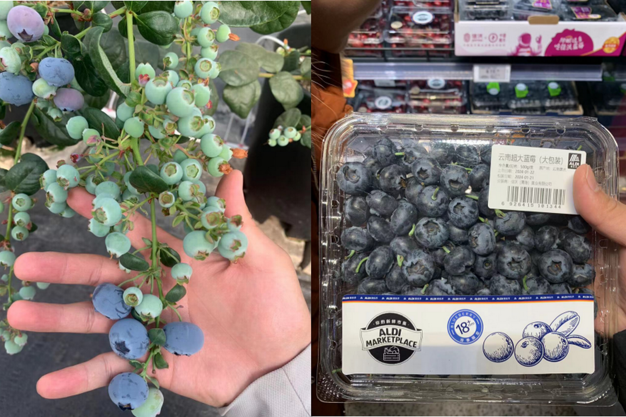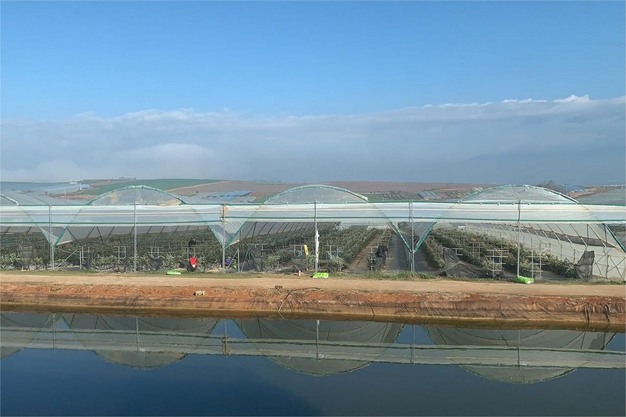China holds the title of the world's largest blueberry producer, with its blueberry industry experiencing rapid growth in recent years. The expansion of both planting areas and consumer demand, coupled with ongoing technological advancements and evolving business models, underscores the industry's dynamic progression. Notably, several leading companies have initiated the export of premium domestic blueberries, reflecting the industry's maturation and global competitiveness. FreshPlaza delved into the development landscape and transformations within China's blueberry industry through an insightful discussion with Mr. Huan Zhang, the visionary founder of Twinkle Star Berry Co. Ltd.
Twinkle Star Berry is dedicated to offering business and technical consultancy services to domestic and international berry enterprises, fostering collaborative exchanges between China and the global berry industry. Mr. Zhang expressed his perspective, stating, "China's blueberry market presents immense opportunities. Many companies in Yunnan have achieved a commendable level of international proficiency in cultivation. I firmly believe that the future trajectory of China's blueberry industry extends beyond domestic production and consumption; it will emerge as a pivotal market for both exports and imports."

"The development advantages of Yunnan's blueberry industry"
"Blueberry cultivation spans numerous provinces across China, with key production areas including Yunnan, Anhui, Shandong, and solar greenhouse facilities in the Bohai Bay region. Notably, Yunnan stands out for its superior varieties and quality attributed to favorable climate conditions. Conversely, Anhui's production areas exhibit inconsistent quality, while Shandong's quality, though typically superior to Anhui's, experiences significant annual fluctuations. Meanwhile, cultivation techniques in Yunnan and solar greenhouses have reached a high level of maturity."
"Presently, blueberry cultivation in Yunnan continues to expand significantly, with a notable shift towards greenhouse planting. The expansion trend is projected to continue, with the total blueberry planting area in Yunnan estimated to surpass 13,333 hectares by the end of this year and into the next."
"In terms of varieties, Yunnan leads the pack, benefitting from its conducive climate and geographical advantages. It has attracted international and local companies, including Driscoll's, Costa, Planasa, and Fall Creek, which have introduced advanced varieties and technologies to the region, resulting in extensive cultivation."
"Of particular interest is the emerging Sekoya system entering the Chinese market. Boasting a diverse array of varieties, this system, though still in its infancy, is poised to wield significant influence over the Chinese blueberry market in the future."
 Blueberries are grown in greenhouses
Blueberries are grown in greenhouses
"Top-tier blueberries necessitate greenhouse cultivation"
The traditional open-field planting approach in Yunnan is transitioning towards facility-based cultivation. Mr. Zhang shed light on the rationale behind this shift: "Top-tier blueberries necessitate greenhouse cultivation. Initially, the greenhouse footprint was limited, resulting in a modest supply of high-quality blueberries. Consequently, open-field blueberries still found a market. However, as greenhouse acreage expanded, the supply of high-quality blueberries surged, prompting market preference for greenhouse-grown varieties. Additionally, while open-field varieties underwent slower updates, greenhouses prioritized cultivating newer varieties favored by the Chinese market, further bolstering demand for greenhouse blueberries. This symbiotic relationship between supply and demand propelled the evolution of planting models."
He noted that greenhouse facilities now exhibit greater diversity, with both local growers and international blueberry companies embracing greenhouse cultivation. However, disparities exist in investment costs and adoption systems. "The ascent of Yunnan's blueberry industry commenced with greenhouse cultivation."
"In contrast to Yunnan's predominant use of plastic greenhouses, northern China predominantly employs solar greenhouses. Currently, China boasts thousands of hectares of solar greenhouses dedicated to berry cultivation. Recent years have witnessed upgrades and transformations in solar greenhouse technology, including overall expansion, individual greenhouse size augmentation, and structural modifications. Varieties grown in northern greenhouses typically undergo updates slightly later than those in Yunnan. In the coming years, we anticipate heightened attention and investment in solar greenhouse cultivation."
As blueberry planting areas and geographical coverage expand in northern regions, Mr. Zhang emphasized the continued focus of breeding companies on Yunnan. Nonetheless, he underscored the significance of the burgeoning planting area in northern China: "For breeding firms, the decision to bolster solar greenhouse blueberry cultivation hinges on industry pricing dynamics."
In the forthcoming article, we will delve further into the comparative advantages of Chinese versus imported blueberries, alongside industry development trends.
